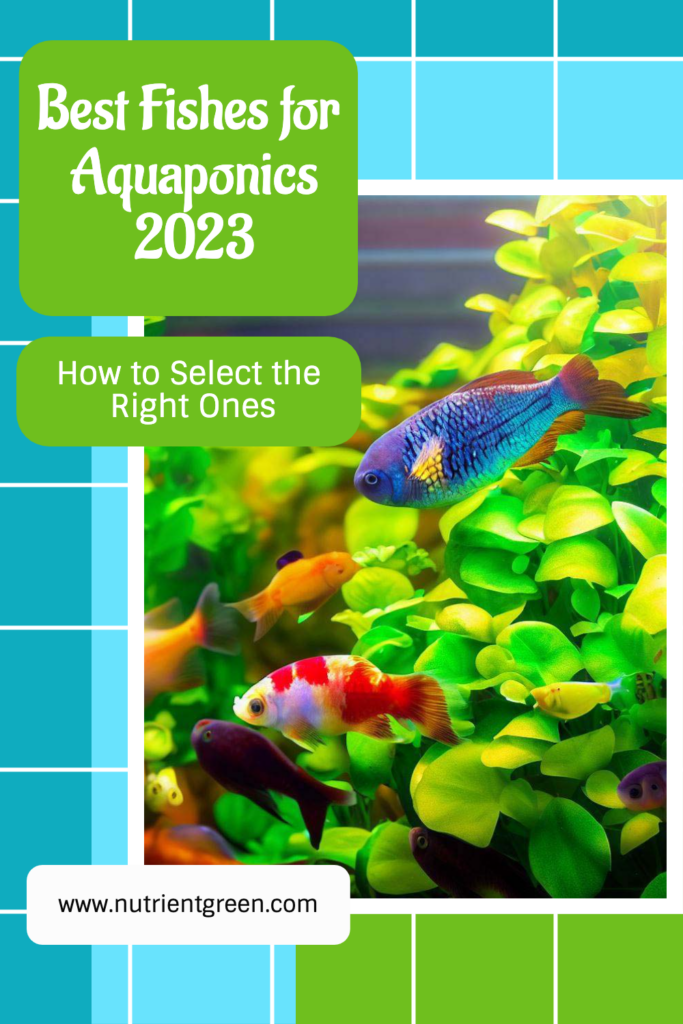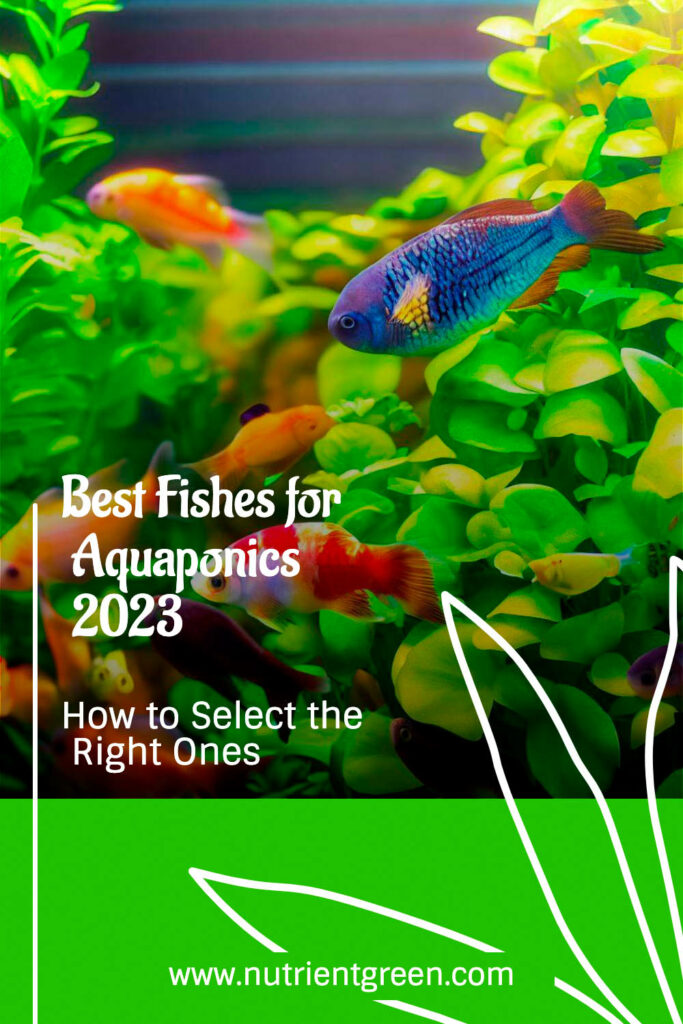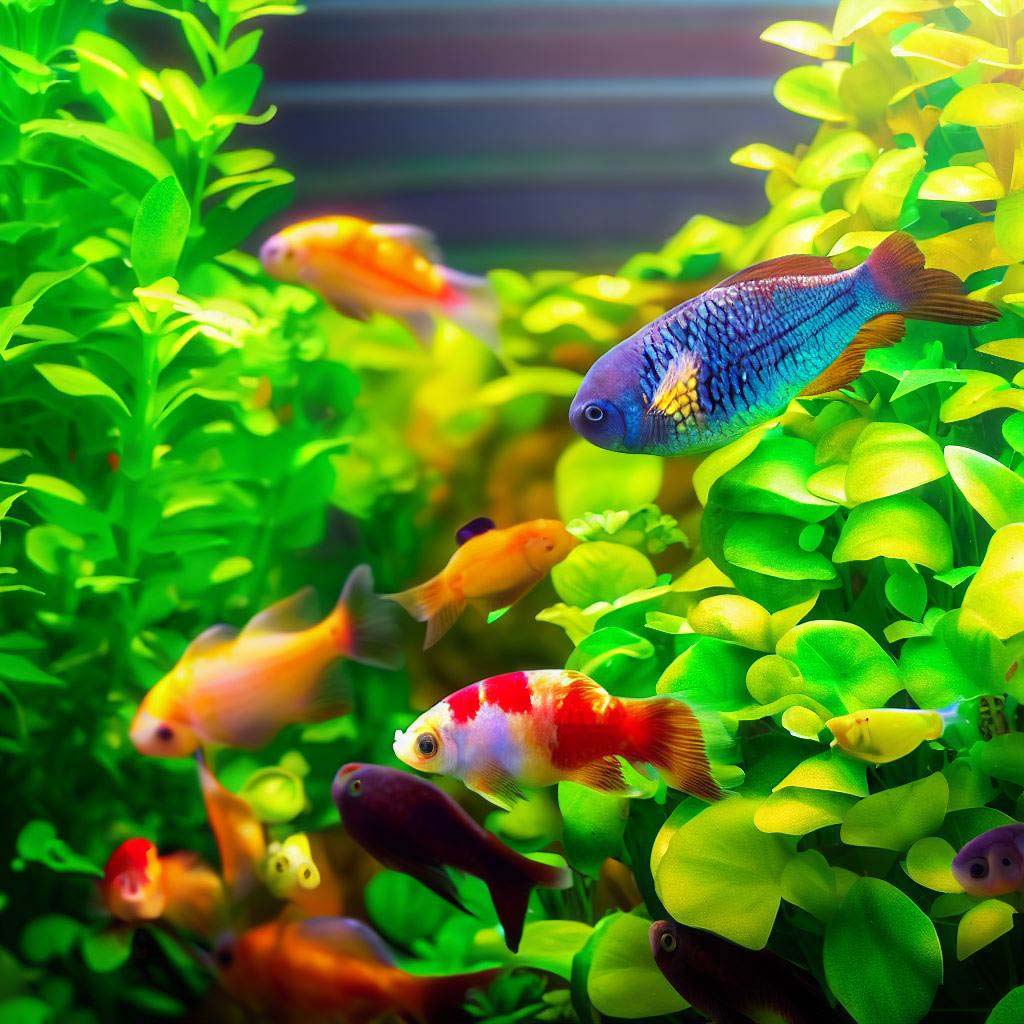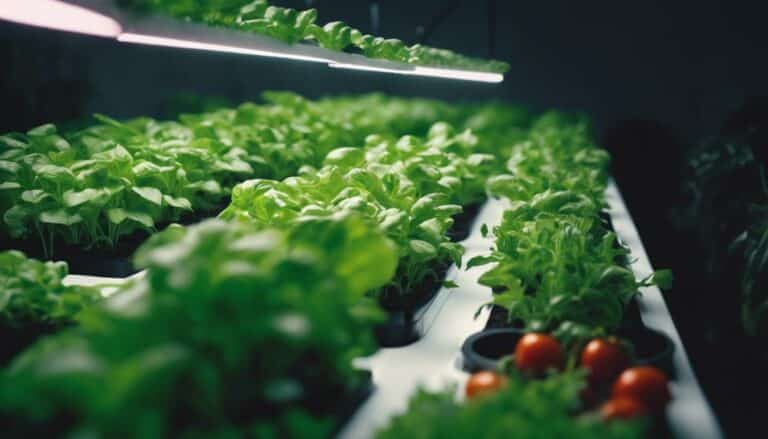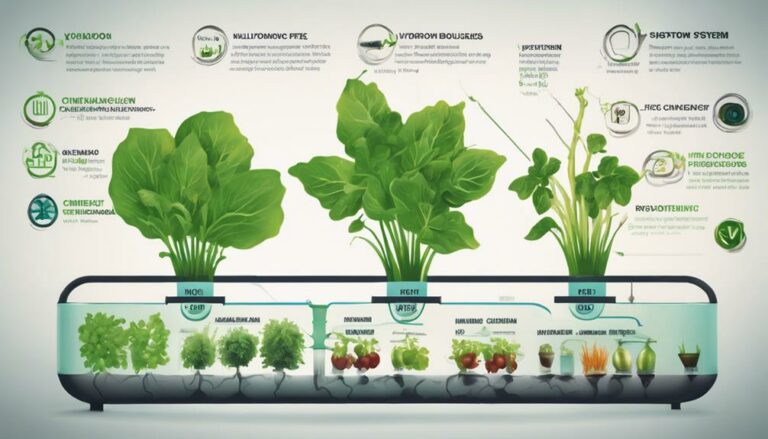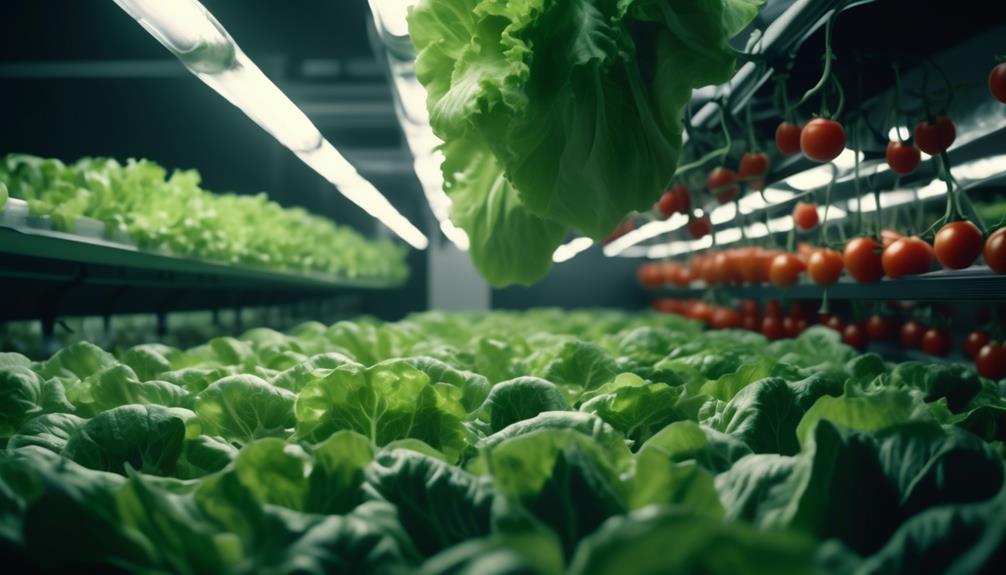Table of Contents
Aquaponics, the symbiotic integration of aquaculture (fish farming) and hydroponics (soilless plant cultivation), offers an efficient and sustainable way to grow both fish and plants. Choosing the Best Fishes for Aquaponics is crucial to the success of such a system. In this comprehensive guide, we will explore the best fishes for aquaponics, considering various factors and system types.
Introduction
Aquaponics presents an innovative and sustainable approach to cultivating plants and fish together in a mutually beneficial system. By combining aquaculture and hydroponics, this closed-loop system recycles water and nutrients, with fish waste nourishing the plants, while the plants filter and purify the water for the fish. The advantages of aquaponics over traditional farming methods are numerous, including water and land resource conservation, reduced chemical inputs and waste outputs, increased crop yields and quality, provision of fresh and organic food, and enhanced food security.
What is aquaponics and why is it beneficial?
However, achieving success in aquaponics requires careful planning and management, starting with the crucial decision of selecting the appropriate fish for your system. The choice of fish significantly influences the system’s health, performance, and aligns with your personal preferences and goals.
What are the factors to consider when choosing fish for aquaponics?
When considering fish for aquaponics, several factors come into play:
- Space requirements: Assess the available space for your system and determine the suitable size needed for the fish to grow and thrive.
- Edibility: Determine if you aim to consume the fish or solely use them as a nutrient source for your plants.
- Hardiness: Consider the fish’s ability to tolerate fluctuations in water quality, temperature, pH, and oxygen levels.
- System size: Evaluate the capacity of your system and the number of fish it can support.
- Breeding ability: Explore the ease or difficulty of breeding the fish within your system.
To facilitate your decision-making process, we have curated a list of the best fishes for aquaponics, categorized according to their suitability for different system types. Our selections were based on factors such as availability, affordability, growth rate, food conversion ratio, taste, nutritional value, and compatibility with other fish species and plants.
Best Fishes for Aquaponics by Category
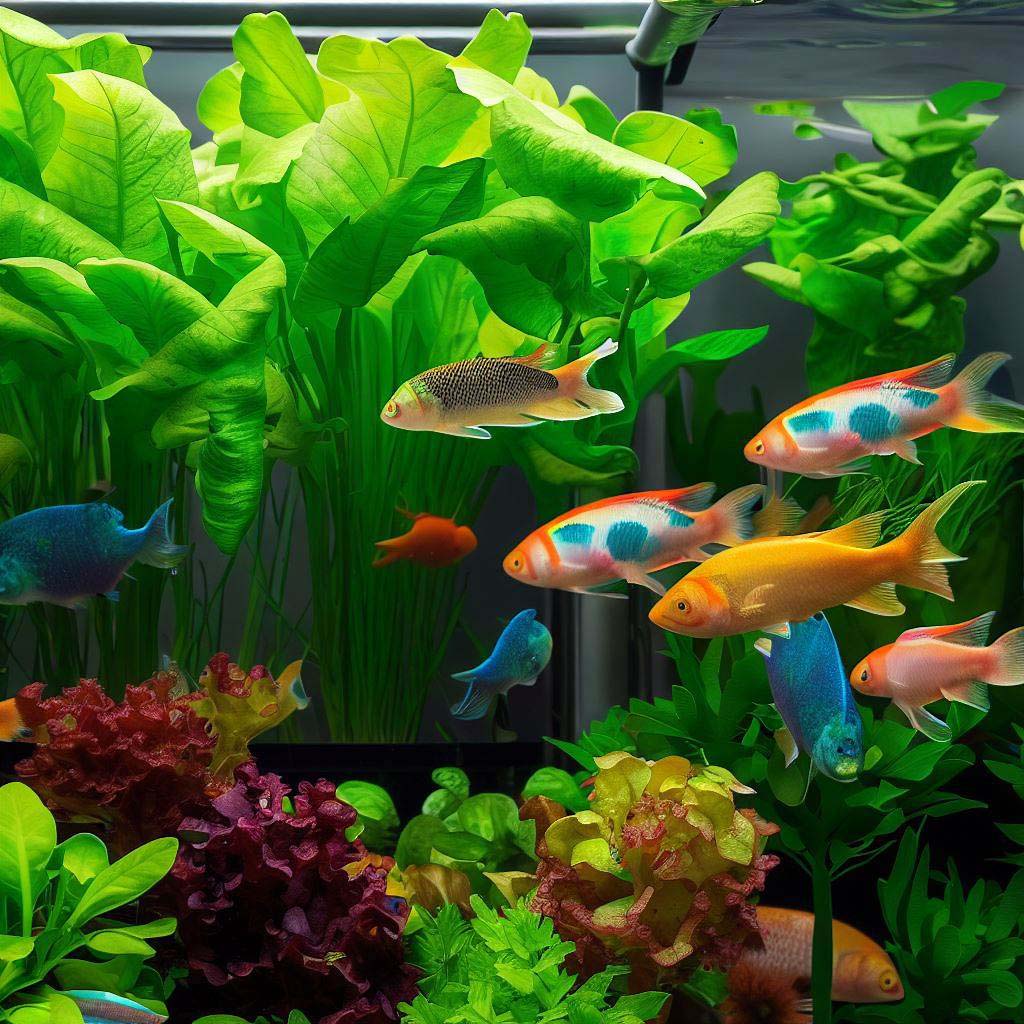
Best Edible Fishes for Aquaponics
If you intend to cultivate fish for consumption or sale, selecting edible fish suitable for aquaponics becomes essential. Edible fish species tend to be larger and require more space, food, and care than ornamental fish. However, they also provide additional benefits, including high-quality protein, omega-3 fatty acids, vitamins, minerals, and antioxidants.
Here are some of the top choices for edible fishes in aquaponics:
1. Tilapia
Tilapia ranks among the most popular and extensively farmed fish worldwide. It stands out as an excellent choice for aquaponics due to its adaptability, rapid growth rate, high food conversion efficiency, mild flavor, and low fat content.
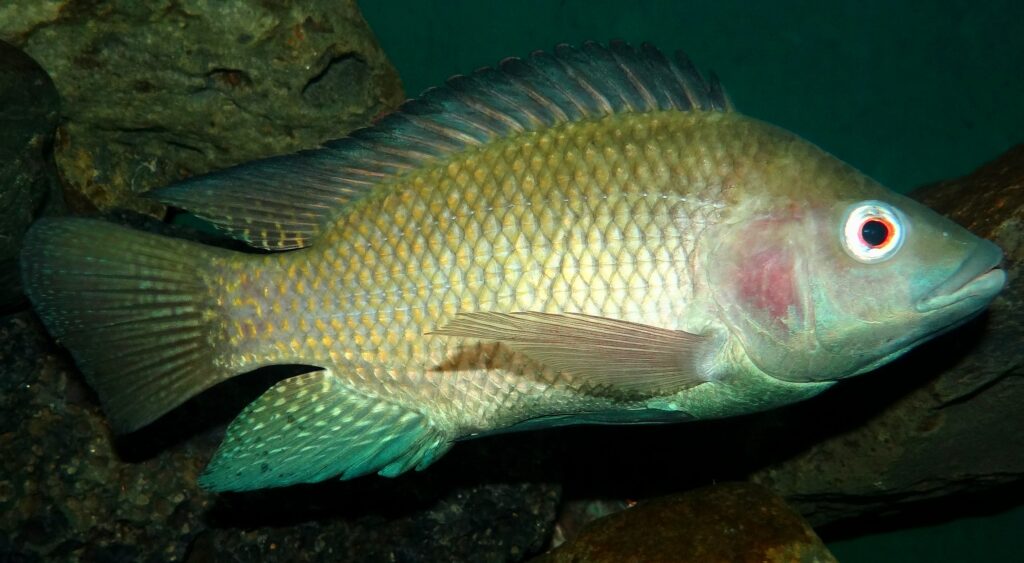
Thriving across a broad range of water conditions, tilapia can tolerate temperatures between 15°C and 35°C, pH levels from 5 to 9, salinity ranging from 0 to 36 ppt, and dissolved oxygen levels of 3 ppm to 10 ppm. They exhibit versatility in their diet, consuming algae, worms, insects, plant-based pellets, and even kitchen scraps.
Within 6 to 8 months, tilapia can reach market size, approximately 500g. They boast a food conversion ratio of 1.5 to 2.0, efficiently converting 1.5 to 2 kg of feed into 1 kg of body weight. With its mild flavor, tilapia suits various cuisines and dietary preferences. Furthermore, its low fat content, around 3%, makes it a lean and healthy choice.
While considering tilapia for your aquaponic system, be mindful of a few drawbacks. Tilapia can become an invasive species, potentially causing ecological issues if they escape into natural waterways. Ensure your system’s security and properly dispose of any unwanted fish. Moreover, tilapia reproduces prolifically, which can lead to overpopulation if not controlled. To prevent this, separate males from females or consider using exclusively male fingerlings, as they exhibit faster growth. Lastly, tilapia thrives in warm water (above 20°C), which may impact certain plants or other fish. Ensure compatibility or employ a heating system if necessary.
2. Catfish
Catfish holds its place as another highly sought-after and extensively cultivated fish globally. It ranks among the best fish choices for aquaponics due to its hardiness, adaptability, fast growth rate, high food conversion efficiency, rich flavor, and high protein content.
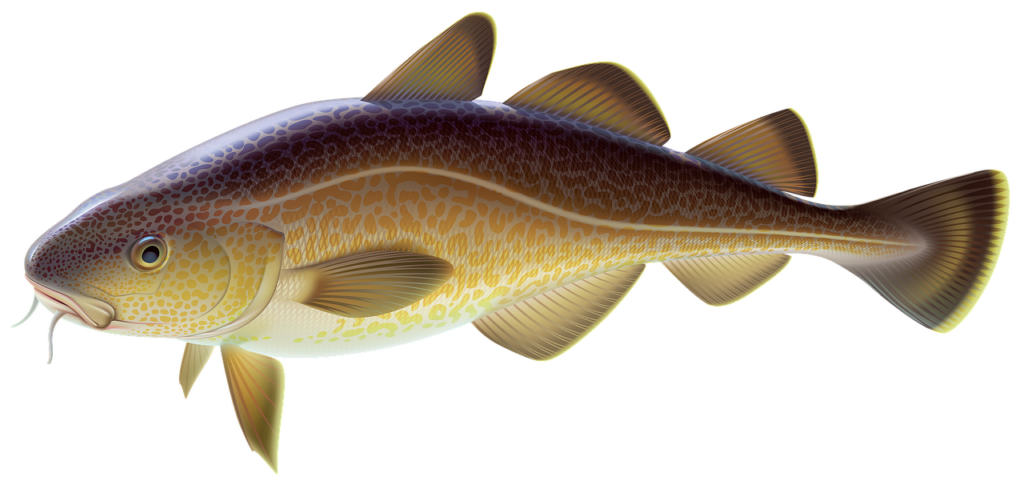
Catfish can tolerate a wide range of water conditions, including temperatures between 10°C and 30°C, pH levels from 6 to 8, salinity from 0 to 20 ppt, and dissolved oxygen levels of 2 ppm to 10 ppm. Their diet encompasses a variety of foods, including worms, insects, crustaceans, other fish, plant-based pellets, and even kitchen scraps.
Within 6 to 12 months, catfish can reach market size, approximately 1 kg. They exhibit a food conversion ratio of 1.5 to 2.5, effectively converting 1.5 to 2.5 kg of feed into 1 kg of body weight. Catfish boasts a rich flavor that complements various cuisines and culinary preferences. Additionally, with a high protein content of about 16%, catfish offers excellent nutritional value.
While catfish is an excellent choice for aquaponics, it’s crucial to consider a few factors. Catfish lack scales and possess sharp fin spines that may cause injuries if handled carelessly. It is advisable to wear gloves or use tools when handling catfish. Additionally, catfish carries a distinct odor that may not be pleasant for some individuals. Regular system cleaning and the use of filters or biofilters can help reduce any potential odor. Finally, catfish prefer murky water, which may not suit certain plants or other fish. Choose compatible plants or fish species or utilize a clarifier or solids filter when necessary.
3. Trout
Trout holds a distinguished position as one of the most highly regarded and valuable fish globally. It stands among the best fish options for aquaponics due to its hardiness, adaptability, fast growth rate, high food conversion efficiency, delicious flavor, and high omega-3 content.
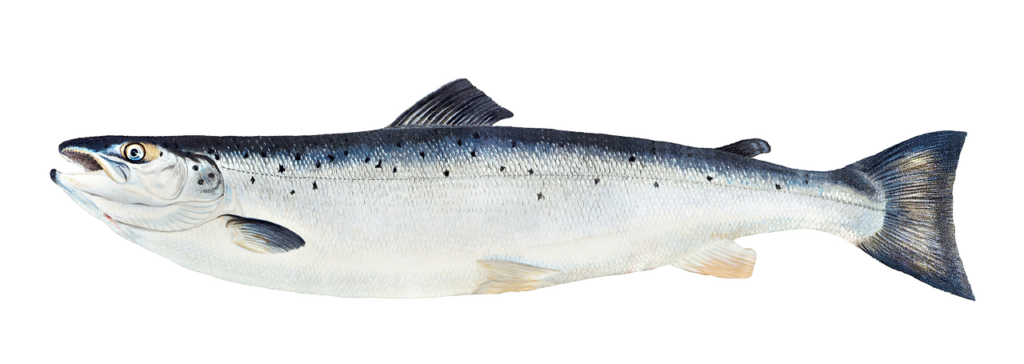
Trout thrives within a wide range of water conditions, including temperatures from 10°C to 20°C, pH levels between 6.5 and 8, salinity ranging from 0 to 15 ppt, and dissolved oxygen levels of 5 ppm to 10 ppm. They possess a versatile diet, consuming insects, crustaceans, other fish, plant-based pellets, and even kitchen scraps.
Within 9 to 12 months, trout can reach market size, around 500g. They exhibit an impressive food conversion ratio of 1.0 to 1.5, converting 1.0 to 1.5 kg of feed into 1 kg of body weight. With its delightful flavor, trout proves to be a fantastic choice for various cuisines and tastes. Furthermore, trout offers a high omega-3 content of about 2%, promoting heart health and brain function.
While considering trout for your aquaponic system, be aware of a few considerations. Trout is a sensitive species, easily stressed by fluctuations in water quality, temperature, pH, or oxygen levels. It is crucial to closely monitor your system and maintain optimal conditions for trout. Additionally, trout is a carnivorous species that requires high-protein feed, which may be expensive or challenging to source. Consider obtaining quality feed or supplementing with natural foods whenever feasible. Lastly, trout favors cold water (below 18°C), which may not be suitable for certain plants or other fish. Select compatible plant and fish species or utilize a cooling system if required.
4. Perch
Perch joins the ranks as another esteemed and valuable fish globally. It earns its place among the best fish choices for aquaponics due to its hardiness, adaptability, fast growth rate, high food conversion efficiency, sweet flavor, and low mercury content.
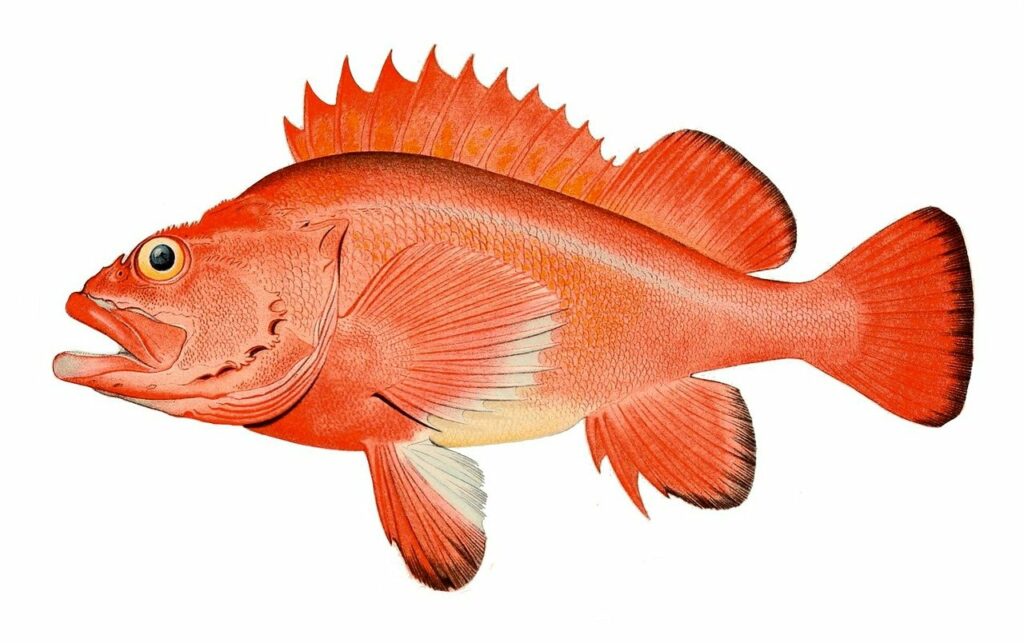
Perch have the ability to thrive in a wide range of water conditions, encompassing various factors such as temperature (ranging from 15°C to 25°C), pH levels (ranging from 6 to 8), salinity levels (ranging from 0 to 10 ppt), and dissolved oxygen levels (ranging from 4 ppm to 10 ppm). Additionally, they exhibit versatility in their dietary preferences, consuming a diverse range of foods including insects, crustaceans, fish, plant-based pellets, and even kitchen scraps.
It takes approximately 12 to 18 months for perch to reach market size, which is around 500 g. They possess a food conversion ratio of 1.5 to 2.0, meaning they can convert 1.5 to 2.0 kg of feed into 1 kg of body weight. Perch are known for their delightful flavor that can cater to various culinary traditions and individual preferences. Furthermore, they contain low levels of mercury (about 0.01 ppm), ensuring their safety and nutritional value.
Nevertheless, there are certain considerations to keep in mind regarding perch. Firstly, being schooling fish, perch require ample tank space and a high stocking density to feel comfortable and avoid stress. Hence, providing sufficient room and companionship for perch is crucial. Secondly, perch can exhibit territorial behavior and may display aggression towards other fish or plants in the system. Thus, regular monitoring of the system is necessary, along with the removal of any injured or deceased fish or plants. Lastly, perch thrive in clear water, which may not be suitable for certain plant species or other types of fish. To address this, careful selection of compatible plants and fish or the use of clarifiers or solids filters might be necessary.
Ornamental fish species for Aquaponics
Aquaponics offers the opportunity to cultivate ornamental fish species known for their beauty and vibrant colors. When selecting ornamental fish for aquaponics, it is important to consider their suitability for the system. Ornamental fish are generally smaller in size and require less space, food, and care compared to edible fish. However, they may offer fewer benefits in terms of protein quality, omega-3 content, and market value.
Here are some recommended ornamental fish species for aquaponics:
Goldfish
Goldfish are globally popular and widely kept. They are an excellent choice for aquaponics due to their resilience, adaptability, slow growth rate, low food conversion ratio, wide range of colors and shapes, and their ability to produce significant amounts of ammonia.
Goldfish can adapt to diverse water conditions, including temperature ranges of 10°C to 30°C, pH levels of 6 to 8, salinity levels of 0 to 12 ppt, and dissolved oxygen levels of 3 ppm to 10 ppm. They have a varied diet, consuming algae, worms, insects, plant-based pellets, and even kitchen scraps. Goldfish typically reach market size, around 100 g, within 2 to 3 years. They have a food conversion ratio of 2.0 to 3.0, converting 2.0 to 3.0 kg of feed into 1 kg of body weight. With their diverse colors and shapes, goldfish can cater to different tastes and preferences. Moreover, their high ammonia production (approximately 0.5 mg/L) makes them well-suited for aquaponics.
However, it’s important to be aware of certain drawbacks associated with goldfish. Firstly, as omnivorous species, goldfish may nibble on plants or roots if they are hungry or bored, necessitating adequate food provision and entertainment. Secondly, goldfish generate substantial waste and solids, which can potentially clog the system or compromise water quality. Regular cleaning of the system and the use of filters or biofilters can help mitigate these issues. Lastly, goldfish prefer colder water, which may not be suitable for certain plant species or other fish. Thus, selecting compatible plants and fish or utilizing a heating system may be necessary.
Koi
Koi fish are widely kept and cherished for their beauty. They are another suitable choice for aquaponics due to their hardiness, adaptability, slow growth rate, low food conversion ratio, diverse colors and patterns, and ability to produce ample amounts of ammonia.
Koi fish can thrive in a broad range of water conditions, including temperature ranges of 15°C to 25°C, pH levels of 6.5 to 8, salinity levels of 0 to 12 ppt, and dissolved oxygen levels of 4 ppm to 10 ppm. Their diet consists of algae, worms, insects, plant-based pellets, and kitchen scraps. Koi typically reach market size, around 1 kg, within 3 to 4 years. They have a food conversion ratio of 2.0 to 3.0, converting 2.0 to 3.0 kg of feed into 1 kg of body weight. With their diverse colors and patterns, koi fish can cater to various aesthetic preferences. Additionally, their high ammonia production (approximately 0.5 mg/L) makes them ideal for aquaponics.
However, it’s important to consider some drawbacks associated with koi fish. Similar to goldfish, koi are omnivorous and may nibble on plants or roots if they are hungry or bored, requiring adequate food provision and entertainment. Koi also generate significant waste and solids, which can potentially impact the system’s functionality or water quality. Regular system cleaning and the use of filters or biofilters can help address these concerns. Lastly, koi are larger fish and need ample tank space and a high stocking density to ensure their comfort and minimize stress. Providing sufficient space and companionship for koi is essential.
Guppy
Guppies are among the most commonly kept and easy-to-maintain fish species worldwide. They are highly suitable for aquaponics due to their hardiness, adaptability, rapid growth rate, high food conversion ratio, diverse colors and shapes, and prolific reproductive capabilities.
Guppies can adapt to various water conditions, including temperature ranges of 18°C to 28°C, pH levels of 6 to 8, salinity levels of 0 to 35 ppt, and dissolved oxygen levels of 4 ppm to 10 ppm. Their diet encompasses algae, worms, insects, plant-based pellets, and even kitchen scraps. Guppies typically reach market size, around 5 g, within 3 to 4 months. They have a food conversion ratio of 1.0 to 1.5, converting 1.0 to 1.5 kg of feed into 1 kg of body weight. With their diverse colors and shapes, guppies can cater to different aesthetic preferences. Moreover, their high reproductive rate (approximately once every month) makes them particularly well-suited for aquaponics.
However, it’s important to consider some drawbacks associated with guppies. Firstly, being small in size, guppies may fall prey to larger fish or birds in the system. Therefore, protecting guppies from predators or selecting compatible fish and plants is crucial. Secondly, guppies have a tendency to overpopulate, which can lead to overcrowding in the system if their reproduction is not controlled. Separating males from females or using only male fingerlings (which grow faster than females) can help manage their population. Lastly, guppies are tropical fish, and their preference for warmer water may not be suitable for certain plant species or other fish. Therefore, selecting compatible plants and fish or implementing a heating system may be necessary.
Tetra
Tetras are another popular and easy-to-maintain fish species, making them suitable for aquaponics. They exhibit hardiness, adaptability, fast growth rates, high food conversion ratios, diverse colors and patterns, and prolific reproductive capabilities.
Tetras can thrive in a wide range of water conditions, including temperature ranges of 20°C to 28°C, pH levels of 5.5 to 7, salinity levels of 0 to 10 ppt, and dissolved oxygen levels of 5 ppm to 10 ppm. They consume various foods, such as algae, worms, insects, plant-based pellets, and kitchen scraps. Tetras typically reach market size, around 10 g, within 4 to 6 months. They have a food conversion ratio of 1.0 to 1.5, converting 1.0 to 1.5 kg of feed into 1 kg of body weight. With their diverse colors and patterns, tetras can cater to different aesthetic preferences. Furthermore, their high reproductive rate (approximately once every month) makes them suitable for aquaponics.
However, there are a few drawbacks to consider with tetras. Like guppies, tetras are small and may be preyed upon by larger fish or birds in the system, necessitating protective measures or selecting compatible fish and plants. Additionally, tetras tend to overpopulate if their reproduction is not controlled, which can lead to overcrowding. Separating males from females or using only male fingerlings, which grow faster than females, can help manage their population.
Thirdly, tetras, being a tropical species, may not be suitable for certain plants or other fish. Consequently, it is essential to select compatible plants or fish species or utilize a heating system if required.
Best Alternative Fishes for Aquaponics
When it comes to aquaponics, if you desire to cultivate unique and distinct fish, it is advisable to opt for alternative fish species that are well-suited for this system. These alternative fish species are generally smaller and less demanding than edible fish, yet more captivating and valuable than ornamental fish. They offer numerous benefits, including high-quality protein, omega-3 fatty acids, vitamins, minerals, and antioxidants.
Below are some of the finest alternative fish species for aquaponics:
Crayfish
Crayfish, resembling small lobsters, are an excellent choice for aquaponics due to their resilience, adaptability, rapid growth rate, efficient food conversion, delectable taste, and high calcium content.
Crayfish can survive across a wide range of water conditions, including temperatures ranging from 10°C to 25°C, pH levels between 6 and 8, salinity levels of 0 to 10 ppt, and dissolved oxygen levels from 4 ppm to 10 ppm. They have a diverse diet, consuming algae, worms, insects, crustaceans, fish, plant-based pellets, and even kitchen scraps.
Within 6 to 12 months, crayfish can reach the market size of around 100 g. They possess a food conversion ratio of 1.5 to 2.0, meaning they can convert 1.5 to 2.0 kg of feed into 1 kg of body weight. Furthermore, they offer a delightful flavor suitable for various cuisines and preferences. Additionally, their high calcium content of approximately 30 mg/100 g contributes to bone health and growth.
However, it is important to consider some drawbacks associated with crayfish. Firstly, they are omnivorous and may nibble on plants or roots if hungry or bored. Hence, ensuring an adequate food supply and providing suitable entertainment for crayfish is crucial. Secondly, crayfish can display aggression and engage in fights with other crayfish or fish within the system. Regular monitoring is required, and injured or deceased crayfish and fish should be promptly removed. Lastly, crayfish have a burrowing tendency that may result in damage to grow beds or pipes, potentially affecting water quality and the system’s integrity. Measures such as preventing burrowing or utilizing gravel or sand as a growing medium can help mitigate this issue.
Shrimp
Shrimp, resembling small prawns, also make excellent candidates for aquaponics due to their resilience, adaptability, rapid growth rate, efficient food conversion, delicious flavor, and high protein content.
Shrimp can thrive in a diverse range of water conditions, including temperatures of 15°C to 30°C, pH levels between 6.5 and 8, salinity levels of 0 to 35 ppt, and dissolved oxygen levels from 4 ppm to 10 ppm. Similar to crayfish, their diet encompasses algae, worms, insects, crustaceans, fish, plant-based pellets, and kitchen scraps.
Within 3 to 6 months, shrimp can reach a market size of approximately 20 g. They possess a food conversion ratio of 1.0 to 1.5, indicating their ability to convert 1.0 to 1.5 kg of feed into 1 kg of body weight. Additionally, they offer a delightful flavor suitable for various cuisines and preferences, along with a high protein content of about 20%, making them nutritious and satiating.
However, it is important to consider some drawbacks associated with shrimp. Firstly, being small in size, shrimp may become prey for larger fish or birds within the system. Protecting the shrimp from predators or selecting compatible fish or plants is crucial. Secondly, shrimp have a tendency to overpopulate, potentially leading to overcrowding within the system. Measures such as separating males from females or utilizing only male fingerlings (which exhibit faster growth) can help manage population control. Lastly, similar to tetras, shrimp are tropical species that may not be compatible with certain plants or other fish. Choosing suitable plants or fish or utilizing a heating system, if necessary, is essential.
Yabbies
Yabbies, resembling small crabs, are another exceptional choice for aquaponics due to their resilience, adaptability, rapid growth rate, efficient food conversion, delectable taste, and high iron content.
Yabbies can thrive in a diverse range of water conditions, including temperatures of 10°C to 25°C, pH levels between 6 and 8, salinity levels of 0 to 10 ppt, and dissolved oxygen levels from 4 ppm to 10 ppm. Similar to crayfish and shrimp, they have a versatile diet, consuming algae, worms, insects, crustaceans, fish, plant-based pellets, and kitchen scraps.
Within 6 to 12 months, yabbies can reach a market size of around 100 g. They possess a food conversion ratio of 1.5 to 2.0, indicating their ability to convert 1.5 to 2.0 kg of feed into 1 kg of body weight. Additionally, they offer a delightful flavor suitable for various cuisines and preferences. Yabbies also boast a high iron content of about 2 mg/100 g, making them beneficial for blood health and energy.
However, it is important to consider some drawbacks associated with yabbies. Firstly, they are omnivorous and may nibble on plants or roots if hungry or bored. Providing an adequate food supply and suitable entertainment for yabbies is important. Secondly, yabbies can display aggression and engage in fights with other yabbies or fish within the system. Regular monitoring is necessary, and injured or deceased yabbies and fish should be promptly removed. Lastly, yabbies have a burrowing tendency that may result in damage to grow beds or pipes, potentially affecting water quality and the system’s integrity. Preventing burrowing or utilizing gravel or sand as a growing medium can help prevent such issues.
Conclusion
In conclusion, aquaponics provides an excellent opportunity to cultivate both plants and fish in a sustainable and productive system. Selecting the appropriate fish species for your system is crucial for its success. The best fish species for aquaponics depend on various factors, including space requirements, edibility, resilience, system size, and breeding capacity. Additionally, considering the compatibility of fish species with plants and other fish within the system is vital. Some of the finest fish species for aquaponics, categorized accordingly, include tilapia, catfish, trout, perch, goldfish, koi, guppies, tetras, crayfish, shrimp, and yabbies.
We hope this article has aided you in selecting the most suitable fish species for your aquaponics system. Should you have any questions or comments, please feel free to share them with us. We are eager to hear from you.
Frequently Asked Questions
How many fish can I stock in my aquaponics system?
The number of fish you can stock in your aquaponics system depends on factors such as the tank size, fish species, feed quantity, water quality, and plant type. A general guideline is to stock one inch of fish per gallon of water. However, this may vary based on the aforementioned factors. Regular monitoring and adjustment of stocking density is advised.
How often should I feed my fish in aquaponics?
The frequency and quantity of fish feeding in aquaponics depend on the fish species, fish size, water temperature, and feed quality. As a general rule, feed your fish once or twice a day, providing an amount they can consume within five minutes. Observation of fish behavior and appetite is crucial in adjusting the feeding regime.
How do I harvest fish in aquaponics?
The method and timing of fish harvest in aquaponics depend on the fish species, fish size, intended purpose, and personal preference. Typically, fish are harvested when they reach market size, which can vary from six months to two years, depending on the species. Adequate preparation, including necessary tools and equipment, should be done to ensure safe and humane fish harvest.
How do I prevent or treat diseases in my fish in aquaponics?
The best way to prevent or treat diseases in your fish in aquaponics is to maintain optimal water quality, temperature, pH, oxygen levels, and stocking density. You should also provide a balanced and nutritious diet for your fish and avoid overfeeding or underfeeding them. You should also quarantine any new or sick fish and remove any dead or dying fish from your system. If you notice any signs of disease in your fish, such as abnormal behavior, appearance, or appetite, you should consult a veterinarian or an aquaponics expert and follow their advice.
Some common diseases that may affect your fish in aquaponics are:
Fungal infections: Fungal infections are caused by various types of fungi that can grow on the skin, gills, fins, or eyes of your fish. They can cause white patches, cotton-like growths, ulcers, or inflammation on your fish. Fungal infections can be prevented or treated by improving water quality, adding salt or antifungal agents to the water, or applying topical treatments to the affected areas.
Bacterial infections: Bacterial infections are caused by various types of bacteria that can infect the skin, gills, fins, eyes, mouth, or internal organs of your fish. They can cause red spots, ulcers, hemorrhages, swollen eyes, mouth rot, dropsy, or septicemia on your fish. Bacterial infections can be prevented or treated by improving water quality, adding salt or antibiotics to the water, or injecting antibiotics to the affected fish.
Parasitic infections: Parasitic infections are caused by various types of parasites that can attach to the skin, gills, fins, eyes, mouth, or internal organs of your fish. They can cause irritation, inflammation, lesions, anemia, respiratory distress, or weight loss on your fish. Parasitic infections can be prevented or treated by improving water quality, adding salt or antiparasitic agents to the water, or applying topical treatments to the affected areas.
What are some common problems with fish in aquaponics?
Fish in aquaponics can face various problems that can affect their health and performance.
Some of the common problems are:
Poor water quality: Poor water quality can be caused by factors such as low dissolved oxygen, high ammonia, nitrite, or nitrate levels, high or low pH, high or low temperature, high or low salinity, or high levels of solids or organic matter. Poor water quality can stress the fish and make them more susceptible to diseases or parasites. Poor water quality can be prevented or corrected by monitoring and testing the water regularly, using filters or biofilters to remove solids and organic matter, using aeration devices to increase oxygen levels, using buffers or additives to adjust pH or salinity levels, using heaters or coolers to adjust temperature levels, or changing the water partially or completely if necessary.
Diseases or parasites: Diseases or parasites can be caused by various types of pathogens such as bacteria, fungi, viruses, protozoa, worms, crustaceans, or insects that can infect the fish externally or internally. Diseases or parasites can cause symptoms such as abnormal behavior, appearance, or appetite, lesions, ulcers, hemorrhages, inflammation, swelling, anemia, respiratory distress, weight loss, or mortality. Diseases or parasites can be prevented or treated by maintaining optimal water quality and fish health, quarantining new or sick fish and removing dead or dying fish from the system, using salt or antiseptic agents to disinfect wounds or lesions, using antibiotics or antiparasitic agents to treat infections if prescribed by a veterinarian or an aquaponics expert, or using topical treatments to remove external parasites if possible.
Predation: Predation can be caused by larger fish or birds that can prey on smaller fish in the system. Predation can cause injury or mortality to the fish and reduce the yield and profit of the system. Predation can be prevented by protecting the fish from predators using nets, covers, fences, screens, scarecrows, decoys, alarms, or repellents. Predation can also be prevented by choosing compatible fish species that do not prey on each other or by separating different sizes of fish using dividers or separate tanks.
